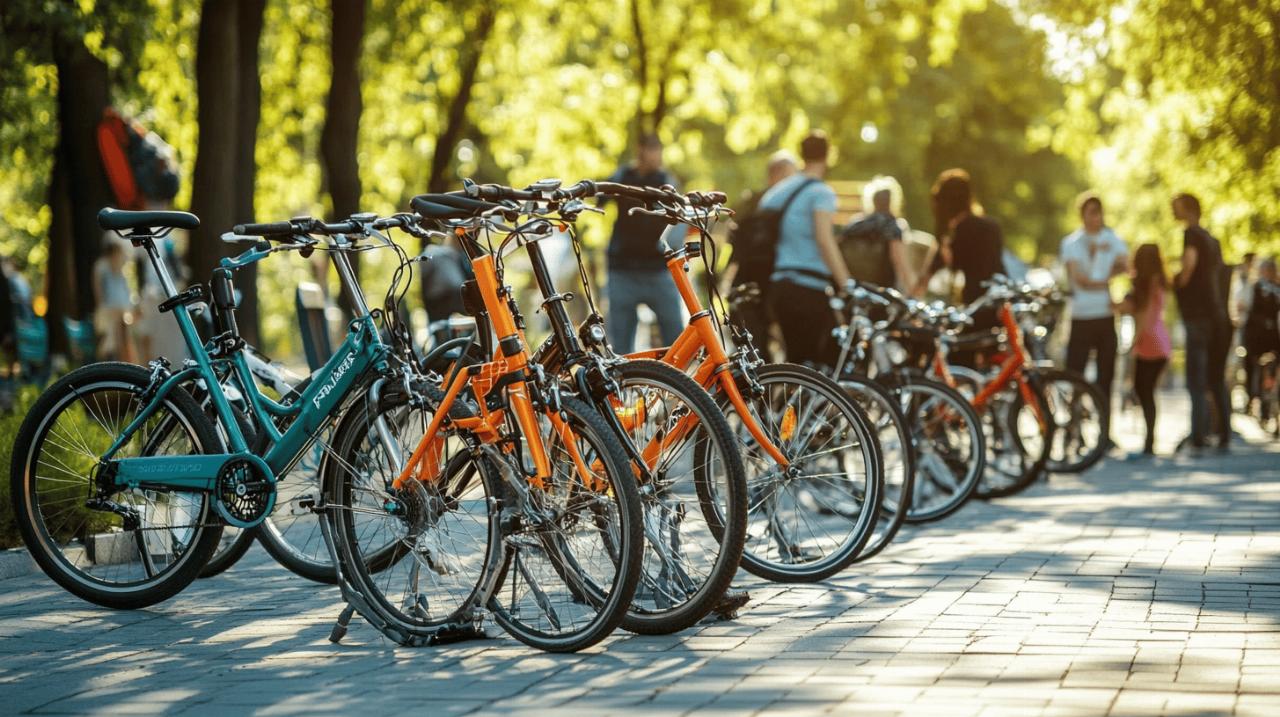Folding bikes have become a genuine game-changer for anyone navigating the demands of modern urban life. Whether you're commuting across London, hopping on and off trains, or simply storing your bicycle in a modest flat, these ingenious machines offer a practical solution without sacrificing the joy of cycling. Yet, with the market brimming with options, from compact city cruisers to high-performance touring models, selecting the right folding bike can feel like a daunting task. Understanding how gear systems, frame materials, and wheel sizes interact with your daily cycling needs is essential to making a choice you won't regret.
Understanding your cycling needs and daily requirements
Assessing your commuting distance and terrain
Before diving into technical specifications, it's worth taking a moment to reflect on the journeys you'll actually be making. Are you planning a gentle ten-minute ride to the office, or do you face a more substantial trek across town with a few hills thrown in for good measure? The nature of your commute directly influences the type of folding bike that will serve you best. For those cycling predominantly on flat urban terrain, a simpler setup with fewer gears might suffice. However, if your route involves tackling inclines or navigating varied landscapes, you'll want a model equipped with a more versatile gear range. Folding bikes designed for bicycle touring or longer distances often feature multi-speed systems that allow riders to adapt to changing terrain with ease. This adaptability ensures that you maintain a comfortable cadence whether you're climbing a steep gradient or cruising along a flat stretch of tarmac.
Evaluating storage space and portability demands
The allure of a folding bike lies in its ability to shrink down to a manageable size, making it ideal for those who rely on public transport or have limited storage at home. However, not all folding bikes fold to the same dimensions, and understanding the relationship between folded size and cycling performance is crucial. Smaller wheels, typically around sixteen inches, create the most compact fold, which is perfect for slipping under a desk or carrying onto a crowded tube. On the flip side, bikes with larger wheels, such as those measuring twenty inches or more, offer improved stability and ride quality over longer distances but result in a bulkier folded package. If you find yourself folding and unfolding your bike multiple times a day, the speed of the folding mechanism becomes another consideration. Some models can be transformed in as little as ten seconds, while others might take several minutes, which can be a nuisance during a busy morning rush.
Essential technical specifications: frame, wheels and weight considerations
Comparing wheel sizes and aluminium frame construction
The choice of wheel size is one of the most significant decisions you'll face when selecting a folding bike. Smaller wheels contribute to a more compact design, which is brilliant for portability and storage, but they can make longer rides feel less efficient and more laborious. Larger wheels, conversely, roll more smoothly over uneven surfaces and maintain momentum better, which is why they're favoured for city cycling and even long-distance touring. A twenty-inch wheel strikes a harmonious balance, offering reasonable foldability without sacrificing too much in terms of ride quality. Frame material also plays a pivotal role in determining both the weight and durability of your bike. Aluminium frames are widely used in folding bikes due to their lightweight nature and resistance to corrosion, making them ideal for urban commuting. A lighter frame is a blessing if you need to carry your bike up flights of stairs or lift it onto a train, so it's worth paying attention to the overall weight when comparing models.
Balancing compact design with riding performance
Achieving the perfect balance between compact design and riding performance is where manufacturers often face their greatest challenge. A bike that folds down to the size of a small suitcase is undeniably convenient, but it must also provide a comfortable and efficient ride once unfolded. Frame stiffness is a key factor here, as a rigid frame translates to better power transfer and a more responsive feel on the road. High-performing folding bikes manage to combine a compact fold with a frame that doesn't flex excessively under pedalling force, ensuring that your efforts propel you forward rather than being absorbed by a wobbly structure. Riders who plan to cover significant distances, perhaps even exceeding a hundred kilometres in a day, should prioritise models that have earned a reputation for delivering a ride quality comparable to that of a traditional touring bike. This often means investing in a premium folding bike from established manufacturers known for their attention to detail and engineering prowess.
Gear Systems and Transmission: Selecting the Right Setup
Shimano derailleur options and speed configurations
 When it comes to gear systems, the name Shimano is synonymous with reliability and performance in the cycling world. Folding bikes often feature Shimano derailleurs, which offer a range of speed configurations to suit different riding styles and environments. A bike with six to eight speeds is generally sufficient for flat urban commuting, providing enough versatility to handle the occasional incline without overwhelming the rider with too many options. However, if your journeys involve more challenging terrain or you aspire to embark on bicycle touring adventures, a model with ten speeds or more will give you the flexibility to tackle steep hills and maintain a comfortable pace on descents. The quality of the transmission system is just as important as the number of gears, as a smooth and reliable shifting mechanism makes all the difference to your riding experience. Internally geared hubs present an alternative to traditional derailleurs, simplifying the drivetrain and reducing maintenance, though they tend to add weight and can be slightly less efficient in transferring power.
When it comes to gear systems, the name Shimano is synonymous with reliability and performance in the cycling world. Folding bikes often feature Shimano derailleurs, which offer a range of speed configurations to suit different riding styles and environments. A bike with six to eight speeds is generally sufficient for flat urban commuting, providing enough versatility to handle the occasional incline without overwhelming the rider with too many options. However, if your journeys involve more challenging terrain or you aspire to embark on bicycle touring adventures, a model with ten speeds or more will give you the flexibility to tackle steep hills and maintain a comfortable pace on descents. The quality of the transmission system is just as important as the number of gears, as a smooth and reliable shifting mechanism makes all the difference to your riding experience. Internally geared hubs present an alternative to traditional derailleurs, simplifying the drivetrain and reducing maintenance, though they tend to add weight and can be slightly less efficient in transferring power.
Matching gear ratios to your riding environment
Understanding gear ratios might sound a bit technical, but it's worth getting to grips with the basics. Lower gears, typically measured in inches, are designed for climbing hills and navigating tricky terrain, allowing you to maintain a steady cadence without exhausting yourself. A low gear of around twenty-five inches is often recommended for those tackling steep gradients. Higher gears, on the other hand, enable you to achieve greater speeds on flat roads and descents, with top gears exceeding a hundred inches being well-suited to high-performance folding bikes. If your daily commute involves a mix of flat roads and rolling hills, a versatile gear range will ensure that you're never left struggling or spinning your legs ineffectively. For riders who prefer a simpler setup, single-speed models offer an uncomplicated experience, though they're best reserved for relatively flat urban environments where gear changes are less critical.
Power, braking and premium features worth considering
Electric motor systems and lithium-ion battery performance
Electric folding bikes, or e-bikes, have surged in popularity, offering a welcome boost for longer commutes or riders who prefer a less strenuous journey. The heart of any electric folding bike is its motor and battery, with Bosch motors being a particularly reputable choice, known for their smooth power delivery and reliability. Lithium-ion batteries are the standard, balancing energy capacity with manageable weight, though it's important to consider the range you'll need on a single charge. Some models can comfortably cover distances exceeding fifty kilometres before requiring a top-up, making them suitable for extended urban adventures. The weight of electric folding bikes tends to be higher, often tipping the scales at well over sixty pounds, which can make carrying them less convenient but is a worthwhile trade-off for the assistance they provide. For those on a tighter budget, more affordable electric options are available, though they may sacrifice some refinement in motor performance or battery longevity.
Disc brake technology and safety components including brompton quality standards
Braking performance is an area where you simply can't afford to compromise, particularly if you're cycling in busy city traffic or navigating wet and unpredictable British weather. Disc brakes, especially hydraulic disc brakes, deliver superior stopping power compared to traditional rim brakes, offering consistent performance in all conditions. This is a feature worth prioritising, as it significantly enhances your safety and confidence on the road. When discussing premium folding bikes, it's impossible to overlook the iconic Brompton, a British institution that has set the benchmark for quality and compact design since the early nineteen-eighties. Brompton bikes are renowned for their meticulous engineering, with a fold so compact that it can be tucked away almost anywhere, and a build quality that inspires loyalty among riders. While they command a premium price, many cyclists consider them an investment that pays dividends in longevity and performance. Beyond brakes, other safety components such as puncture-resistant tyres can save you considerable hassle, particularly if you're relying on your bike for daily commuting. Upgrading to robust tyres is a sensible precaution that minimises the risk of being stranded with a flat.

